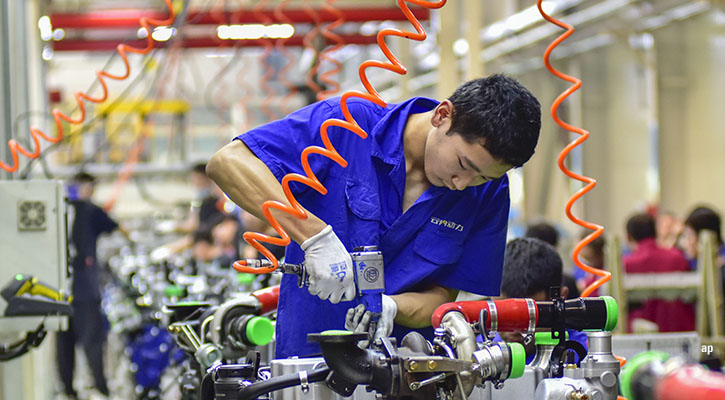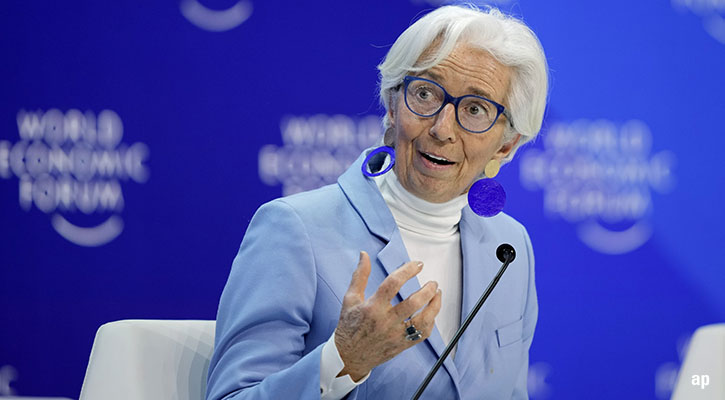Jeremy Glaser: ForMorningstar, I’m Jeremy Glaser. There have been a lot of worries about Chinese growth and the future of the Chinese economy. I am here today with Dan Rohr, a stock analyst here at Morningstar, to get his take on what’s happening in China today and what some of the outcomes could be for the Chinese economy.
Dan, thanks for joining me.
Dan Rohr: Thanks for having me, Jeremy.
Glaser: Let's talk about why at least in the past couple of months there has seemed to be an increasing number of stories, worrying about Chinese gross domestic product growth, worrying about what’s happening in China. What are some of the big macroeconomic issues that they're facing right now?
Rohr: It’s certainly a complex topic, and there's a lot of stuff going down. But just to boil it down to two points really--Fundamentally, the issues facing the Chinese economy are slowing growth amid growing credit. In other words, they're having to borrow more to generate the same unit of growth, and generally speaking that's not a very good recipe. And that's obviously garnered a lot of media attention, and it’s garnered the attention of the powers that be in Beijing, as well.
Glaser: Let's look over recent history. How has China been achieving that higher growth rate? Is it just from borrowing more or is it more this urbanization trend that people talk about a lot?
Rohr: I should stipulate, when I say borrowing, it's not China borrowing from other countries. It's borrowing that occurs within China, and that borrowing is largely a transfer from household savings to state-owned enterprise borrowers and local government borrowers. You asked about how China has been growing so fast recently. The composition of China's growth, especially in the past 10 years, has really been investment-dominated. Folks in the United States like to think of China as an export-led story, but it's really an investment story. By that I mean everything from infrastructure investment, to residential real estate investment, to investment in manufacturing capacity. At present that constitutes upward of 50% of Chinese GDP in a given year, which is truly an unprecedented share of economic activity when you compare it versus every major country in history.
<TRANSCRIPT>
Glaser: Why isn’t this sustainable? You have an enormous country that needs a lot of infrastructure. Why is that 50% too much? Why is that starting to break down?
Rohr: It's not like this is a wholly new model. The Chinese didn't stumble upon some new way to grow. We've seen it been tried time and time again throughout history, most notable by, say, the USSR in the 1950s and '60s, Japan after that, and Taiwan and Korea. For a period of time you can really turn in very, very high growth rates with this model. The binding constraint of the investment-led model is debt. That's because with any investment, you're going to realize diminishing marginal returns on that investment. Ultimately you're running into a situation if you continue to invest more and more and more, the borrowers aren't able to cover the costs of financing that borrowing. We’re beginning to see early signs that China is at that point or very near that point.
Glaser: What are some of those signs? How can you tell that this has run its course?
Rohr: What we see is, as I said, falling returns on investment and worrying signs of a defaults with Chinese corporate bonds. There are signs of difficulty in, say, the shadow finance sector and increasingly tightened credit. Some of that's attributable to government action, the central-bank action, but just as much I think is the result of the fundamental decline in borrower quality.
Glaser: You mentioned the government a few times there. What is the government doing in the face of some of these concerns that you just mentioned? Do they have any policy options that can slow down this decline?
Rohr: The government is genuinely concerned about the overreliance on investment. As recently as 2007, for example, they have specifically articulated a policy objective of moving away from an investment-led growth model to a more sustainable consumption-led growth model. The problem is they've let that investment-led model run so long that transitioning to consumption and the policy changes they need to transition to consumption would be very risky to the current system and could result in a crisis.
Take, for example, one step they could undertake to improve household incomes and generate additional consumption would be to liberalize the deposit [interest] rate.Economists estimate that anywhere from 5% to 9% of Chinese GDP is transferred away from households in the form of an artificially low deposit rate, which has averaged negative 1.6% over the past decade in an economy that's grown at 10% annually over the past decade. The problem with that full liberalization, which would put more money in the pockets of households, is that it would have the effect of sending a lot of borrowers into default. You think when they're trying to roll over loans in a fully liberalized interest-rate environment, it will be a whole heck of a lot harder.
Glaser: If they are facing these problems, this rebalancing of going from an investment-led to a consumption-led economy, is there a way to do that gracefully, or is it going to be a long, bumpy process and we should get used to that?
Rohr: I would expect it to be a long, bumpy process, and one reason I say that is because when we take a look back at past examples of this rebalancing act, this transition from investment-led growth to consumption-led growth, what we find in each and every case is not only do these countries experience lower investment growth, and in some cases it goes negative for several years, but also lower consumption growth.
It's not a case of a smooth hand-off from investment which decelerates and consumption which accelerates. They both in fact decelerate, but it's just investment decelerating faster that delivers that transition. In that sort of experience, if China were to have a typical experience, the sort of 7.5% GDP growth that we see folks talking about, that folks think could be sustained, say, in the medium term, would be very, very, very difficult to achieve.
Glaser: When you think about kind of a scenario analysis from this--I know sometimes people talk about a soft landing versus a hard landing--what do you think is the best-case scenario or the best way that this could happen and maybe more of a worst-case scenario if things really go against the Chinese in this area?
Rohr: Due to the fact that government can keep this game going on for quite a bit longer, I tend not to focus so much on quarter to quarter, but over the long-term, and by that I mean the next five to 10 years. That really aligns with our methodology on the equities side. Over the next five to 10 years, I really don't see China booking that 7.5% of GDP-growth rate.
I think in a good case they can do 5% on an annualized basis on average, and what would be is maintaining the consumption growth rate of the past decade, which was 7.5%. There are some secular tailwinds that suggested they could perform better than past countries have done and they could maintain that growth rate. Then you would see a deceleration, but not falling off the cliff of the investment side, and that's how I get to 5%.
Glaser: What impact is this going to have on the equity market then, both on companies that are selling into China and potentially Chinese companies? It's a broad area, but what do you think some of the most affected sectors will be by this hand-off?
Rohr: Given that China has accounted for a significant share of global GDP growth over the past decade, you'd be hard-pressed to find a sector that won't be affected in some way by lower Chinese GDP growth, but also a rebalancing of that Chinese GDP growth.
In the sector I cover, which is mining, you're really looking at a different set of winners and losers in the next decade. In the past decade, you saw folks that sold iron ore and sold copper, investment-intensive sort of commodities prosper the most. In the decade to come, I think the relative winners are those that are positioned to capitalize on Chinese household-consumption growth, which is going to be growing, I think, at a much stronger pace than the investment side of the economy. In mining that would be folks that produce stuff like palladium, stuff that goes into jewelry, like gold, diamonds. [Producers in] foodstuffs, like potash [producers will also play a role]. Things of that nature.
Glaser: In the mining space, though, is this already priced in? For those companies that are more tilted toward household consumption, are valuations already rich, or are there any opportunities there?
Rohr: During the past several quarters, as we've seen the market increasingly price in a more bearish scenario for China, we've seen equity prices in the mining space fall significantly. Despite that, I would say broadly speaking we don't see a whole lot in the way of screaming buys at the moment. When we're thinking about how we would position ourselves for the decade to come in this rebalancing, generally we are looking for companies that check one of two boxes.
One, [we're looking for companies that have] modest exposure to the sort of investment-oriented commodities, things like iron ore and whatnot. Unfortunately, among the large diversified producers, there aren't many that check that box. The only one really would be Anglo-American, which is the world's largest producer of platinum group metals and the world's largest producer of diamonds, as well.
The other box that we'd like to see checked is [for a company that] still has plenty of exposure to the investment-oriented commodities but is a low-cost producer. For that [kind of company] the decline in Chinese demand growth for those commodities doesn't constitute an existential threat. It is still going to be booking profits. On that front, we'd be looking at folks like Vale, BHP Billiton, and Rio Tinto.
Glaser: Dan, I appreciate your thoughts on China today.
Rohr: Thank you, Jeremy.
Glaser: For Morningstar, I am Jeremy Glaser.







.jpg)

















